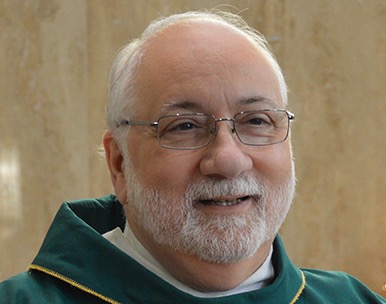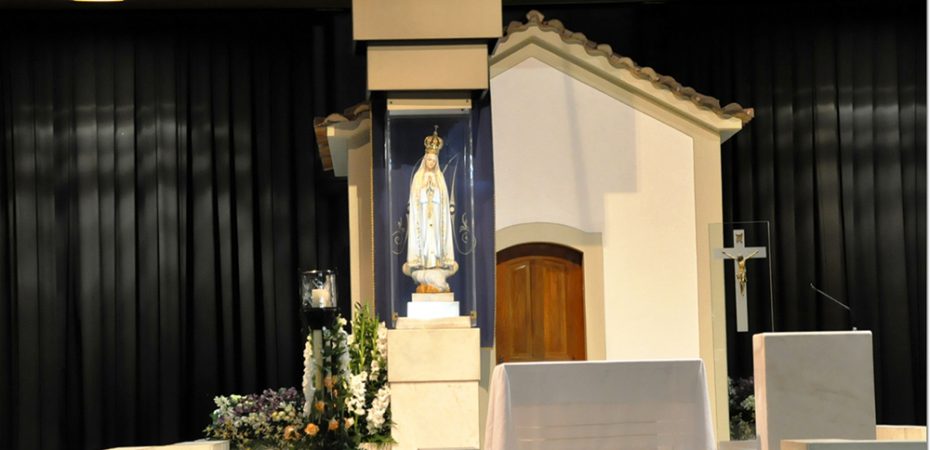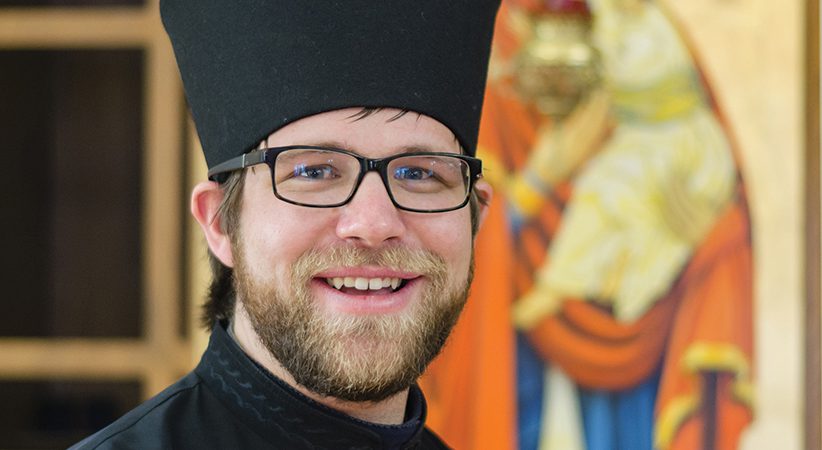A Deacon’s Pilgrimage
Journey to Europe offers unique opportunities to reflect on the diaconate
Deacon Dominic Cerrato Comments Off on A Deacon’s Pilgrimage
 Recently, I had the privilege to make a pilgrimage to Rome, Fátima and Lourdes with my wife and a group of 12. Rome is a fascinating city with an endless array of sites. While the tour hit the usual places like St. Peter’s Square, the four major basilicas and the catacombs, as a deacon, I was interested in something off the beaten path, the Basilica of St. Lawrence Outside the Wall.
Recently, I had the privilege to make a pilgrimage to Rome, Fátima and Lourdes with my wife and a group of 12. Rome is a fascinating city with an endless array of sites. While the tour hit the usual places like St. Peter’s Square, the four major basilicas and the catacombs, as a deacon, I was interested in something off the beaten path, the Basilica of St. Lawrence Outside the Wall.
Skipping the traditional tourist sites and departing from the larger group one day, my wife and I braved the Roman transit system to find St. Lawrence tucked into a little corner of the Eternal City. Compared to the major basilicas, this minor basilica is quite modest. The structure dates back to the fourth century when Emperor Constantine built an oratory in honor of St. Lawrence on the site where the deacon was believed to be martyred. By the sixth century, a church was built on that same site by the Byzantines, to be followed by another in the 12th century. During World War II it was damaged by allied bombings and was subsequently restored.
St. Lawrence’s facade is simple with a gated portico whose inner walls are covered with early frescoes of martyred saints. Like
the outside, the inside of the basilica admits to a simple but elegant splendor. The center aisle ended at the main altar, which
was raised. A staircase in front of the altar descended to a small crypt that houses the remains of two saints particularly relevant
to the diaconate, St. Lawrence and St. Stephen. Together, each in their own way, they personify what it means to be configured to
Christ the Servant.
As I prayed before the relics of these saints, the gift of my diaconate was inflamed. I was, in that moment, sharing in something
timeless and eternal. In the midst of this, I began to reflect upon how sacred ecclesial service, when authentically lived out,
should admit to some form of martyrdom. Later in the pilgrimage, we visited Fátima in Portugal. A peace pervaded the village and, in particular, the sanctuary that consisted of two basilicas on either end of a huge plaza. It was my turn to preach that day, and I was looking forward to the Mass, which I assumed, like the Masses before, only consisted of our small group, so I prepared something simple and extemporaneous.
The tour guide indicated that Mass would be in the Chapel of the Apparitions. Upon seeing the chapel, which was built over
the site where Mary appeared to the children, I enquired how we would all fit in the small structure. It turns out that the chapel faces
the plaza and Mass would be in front facing the pilgrims. Ugh! Comforted by the fact that God’s grace would be sufficient and
that many of the pilgrims would not understand English, I just let go and preached from my heart. It was an amazing experience
and a highlight of my diaconate.
The trip ended in Lourdes, France, where we visited the sites and celebrated Mass in the grotto. Both Fátima and Lourdes
share similar themes, particularly as they relate to conversion and reparation.
Having raised a rather large family and having worked for the Church most of my life, there was neither the time or money to go
on a pilgrimage. Moreover, without my wife to join me, it would have been a diminished experience. Thanks to Proximo Travel,
we were blessed to have been able to see the sights and experience some of the richness of our Catholic heritage, especially as it
relates to my diaconate.
DEACON DOMINIC CERRATO, Ph.D., is editor of Deacon Digest and the director of diaconal formation for the Diocese of Joliet, Illinois. He is the founder of Diaconal Ministries, where he gives national presentations and retreats to deacons and diaconal candidates. Follow him on Facebook to continue the conversation.



